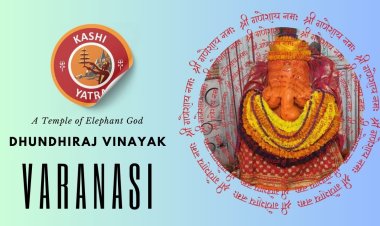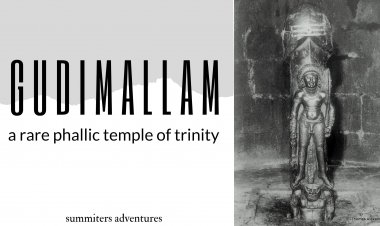Lolark Kund - A oldest sacred stepwell in Kashi
Eternal city Varanasi has experiences to offer for the different people. For few it’s the history, while to others it’s about art and culture. But above all it is the land where every temple, Kund , pond or river is conferred as a pilgrimage. Life seamlessly blends here with death. Every dip in the water bodies here is considered as saintly and divine. One such place of distinguished importance is Lolark KundLocated near the Tulsi Ghat is Lolark Kund which is also known as the Lord Sun’s Pond. Childless couples visit this place across globe to take a dip in this Kund with the hope of conceiving a child. Varanasi is place to visit in a lifetime, If you happen to visit the city don't forget to include lolark kund in your travel list


Ganga Mahal Ghat
Though numerous water bodies surround sacred city, one such place of distinguished importance is Lolark. It means "trembling sun," referencing the sun's reflection on the water of the kund.
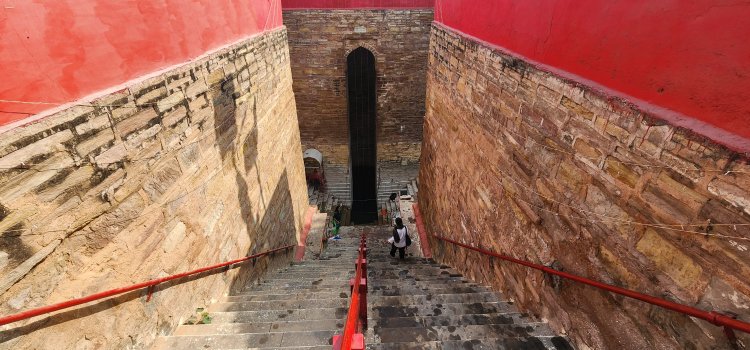
Of all the stepwells I have seen during my tour in India. Lolark Kund is certainly one of the most eye catching and unique, with a flight of very steep steps on three sides entrypoints leading down to the sacred water body, which is separated from the main well by an incredibly tall and narrow arch. This distinctive and unusual arch faces the path of the rising sun and sunset over the river Ganges a short distance away. One need to descend to the kund enroute the adjacent Lolark Aditya Mandir immediately to the south.
As per epigraphical evidence,the structure that can be seen today dates to around 1000 A.D.Where as per history Lolark Kund dates much older than that, and said to be one of the oldest sacred sites in Varanasi. It is mentioned in (Kashi khand of Skanda Purana)
The kund is said to been built by the royal family of Cooch Behar, West Bengal. Two copper plate inscriptions found here record the patronage of the Gohadavala kings, who bathed and worshipped here and Ahilya bai holkar too is said to done charitable donations in late years.The Gohadavala dynasty ruled from 1089 – 1197 A.D., which may well connect to the current kund structure we see today was built.
Mythology & Legends
The origin of Lolark Kund is associated with the story of Surya - The Sun God who divided himself into twelve parts.One can see temples dedicated to Aditya in Kashikhand of Skanda purana
Once upon a time, the world experienced a severe drought that lasted for over six decades. In times of such crisis, Dharma was not in order. Lord Brahma, knowing the chaos, couldn’t find any solution other than entrusting the responsibility of the entire planet and its people on Ripunjay, the only sage-king left, the only ‘human’ who could save life on earth.
Upon request Sage Ripunjay - Later renamed as King Divodasa accepted this power with great reluctance and upon one condition: the gods would have to retire from the earth. Without further discussion notices was sent to all the gods and even ganas of Shiva were asked to part from Kailasa. The new king established his throne, renamed himself Divodas and made Kashi his capital. Soon, people under his rule prospered and Dharma was revived again.Everyone lived in harmony !
Lord Shiva expressed his to return to Kashi from Mount Mandara from where he had been banished.
After discussions, Shiva and Parvati decided to ask the 64 Goddesses (yoginis) for help. The yoginis adopted numerous disguises and descended on Kashi in an attempt to disturb the kings rule, but all his efforts were futile

In a desperate mood Shiva is said to have requested Surya, the all powerful of devas who agreed to help him. Legend says that when Surya first set his rays on Kashi, he is said to have trembled with pure uncontrolled awe and happiness
The place where he dropped his powerful rays came to be called Lolark Kund, but even Surya failed to disrupt the kings rule. Ashamed of his failure and yet captivated by the city, Surya settled down in Kashi and divided himself into 12 parts called adityas. This is how Kashi became known as the home of the adityas, with Lolark the most important of these. Lolark means ‘trembling Sun’, referring back to Surya’s reaction upon first setting his eyes on the city of Kashi.
It is widely thought that long before 1000 A.D. it is said to be a place to bathe and worship. Lolark Kund may well have been a place for sun and naga (serpent) worship before Vishnu and Shiva were adopted as the great Gods of Kashi.
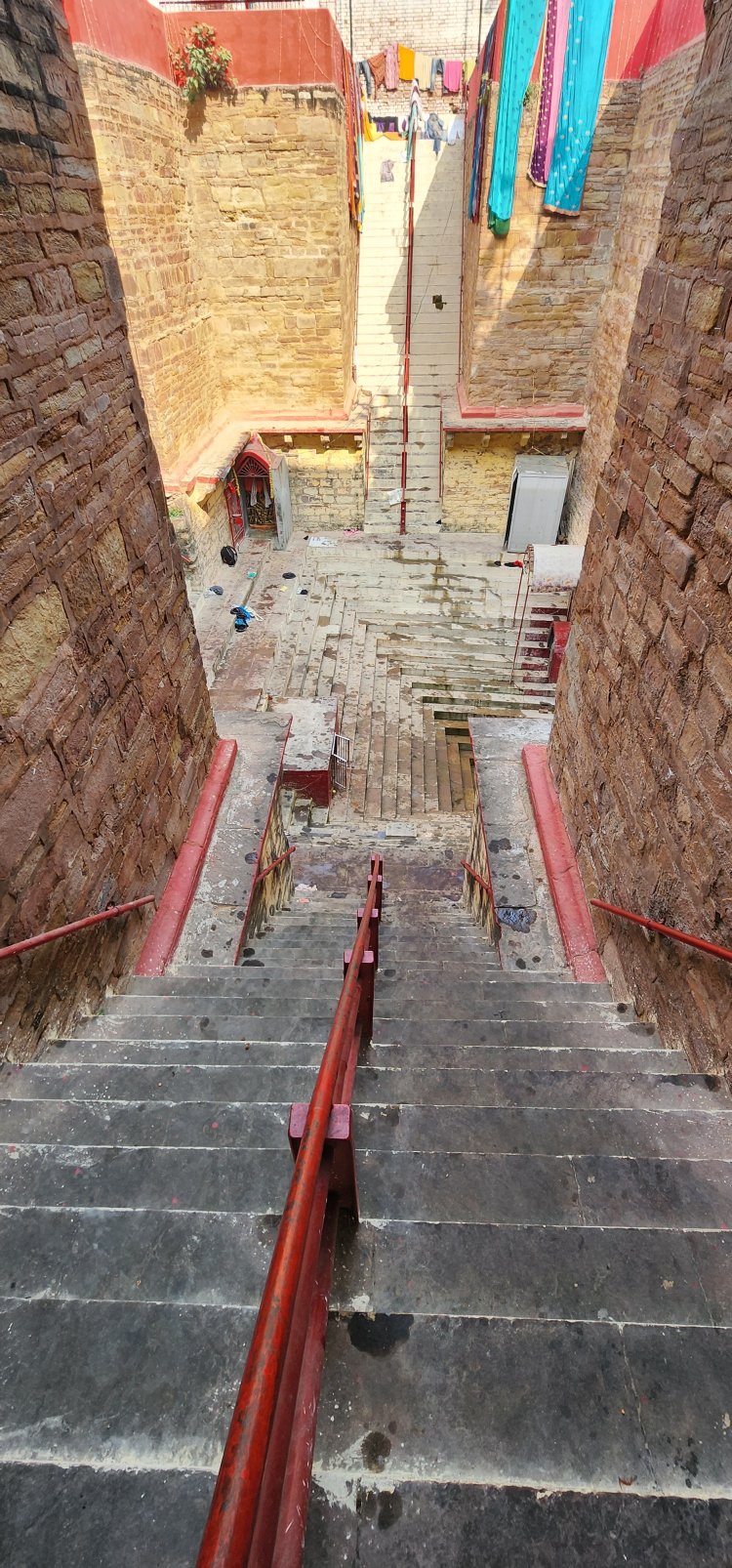
The water here is said to have some divine powers of fertility.
( Read blog on fertitity temple chao me tuptim in Bangkok )
One of a story of faith relates to an event dating back to 18th century.The King of Cooch Bihar State was healed of the a skin disease after taking a dip in this holy kund and ever since then there is a conventional belief that the worshiper may get rid of any kinds of skin diseases here.
Located near the Tulsi Ghat is Lolark Kund which is also known as the Lord Sun’s Pond. Everyday childless couples visit this place and take bath in this Kund with hopes for a male child / heir or offspring
It is believed that women who bathe in the water and pray to Lolark Aditya,so that they will be showered with a child, and specifically a son.
On a designated festival day called Lolark Chatt’ during the monsoon season (Lolark Shashti), during month of Bhadrapada thousands of couples visit the Kund at sunrise,when rays of sun touch the kund and water of kund gains immense powers.Visitors leaving their wet clothes behind after bathing along with a piece of fruit or vegetable that they pledge never to eat again.
'How true the Phrase is that Faith Can move Mountains'
To beget a son, the couples have to bathe together, her sari tied to his doti, as in marriage ceremony. Some devotees also discard ornaments into the water, to be later retrieved by the priests to help maintain the environs. Couples who claim to have had a son as a result of previously bathing here return to the kund with the child for thanksgiving and to give the child’s first mundan ceremony (tonsure).
![]()
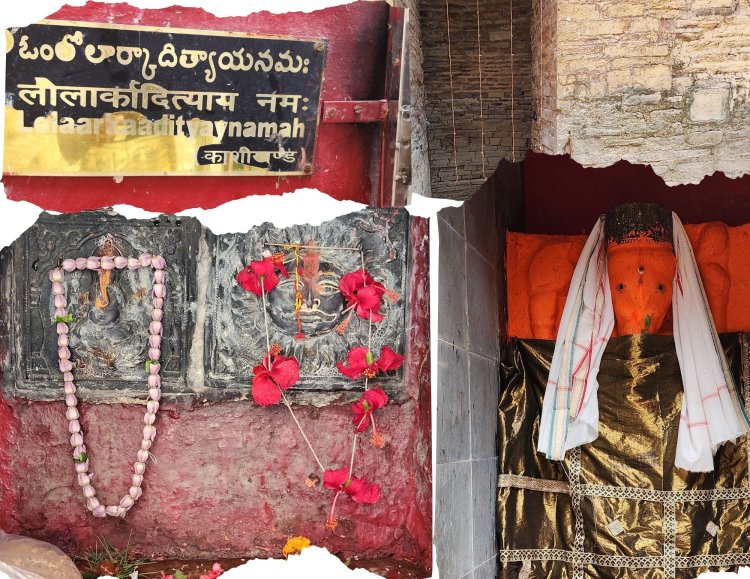
I found locked gates, restricting entry into kund.Railings runalong the steps to descend down.One should be cautious enough to reach the base of kund.One cant image how busy would be during festival.The steps being incredibly steep and difficult to negotiate and to be done with utmost care.
I found few images and idols been taken place inside the side walls runing along the railing.The assumed that earlier temple would have probably stood on the same site as the more modern Lolark Aditya Mandir, which is dedicated to Shiva and has some interesting carvings including the Navagraha.

Seeing the present location of Lolark Kund today and the way its being protected, it’s unimaginable the surrounding environs could have been centuries back.This whole area would have been quite densely forested, surrounded with waterbodies .Only a handful of palatial structures and temples may have existed, but this kund is mentioned in great epics gives a different picture in all.
During my visit, i could not gain entry into the kund or photograph at the first glance initially, as it was locked by a local makeshift care taker.Though i did not see any board displayed by ASI around.I had to shell out Rs 25/- to gain entry inside and those couples willing to take bath had to pay Rs 50/- per visit.
Seeing at the colorful clothes being dried on the walls of the parapet wall.I felt wheather its a ghobi ghat or of those residents residing around use it for drying clothes.Whatever be it, the kund is well kept.with temporary changeover rooms and meeting the requirement of people visiting it.
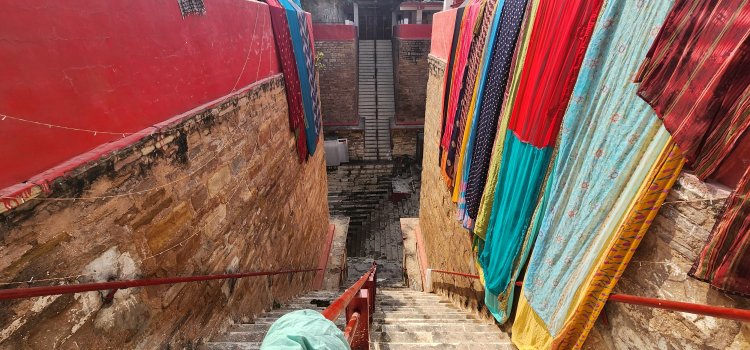
Be it the practices or medicinal properties of water in kund prevailing unknowningly beckon the devotees. Lolark kund located in sacred city is a place to visit once in a life time and is a sight to behold with turquise water shimmering in sun light sitting on symmetrical steps leading to it.
Driven by faith ! Those after a dip return back home with a ray of hope, frown on their faces and a sense of satisfaction in their hearts !








